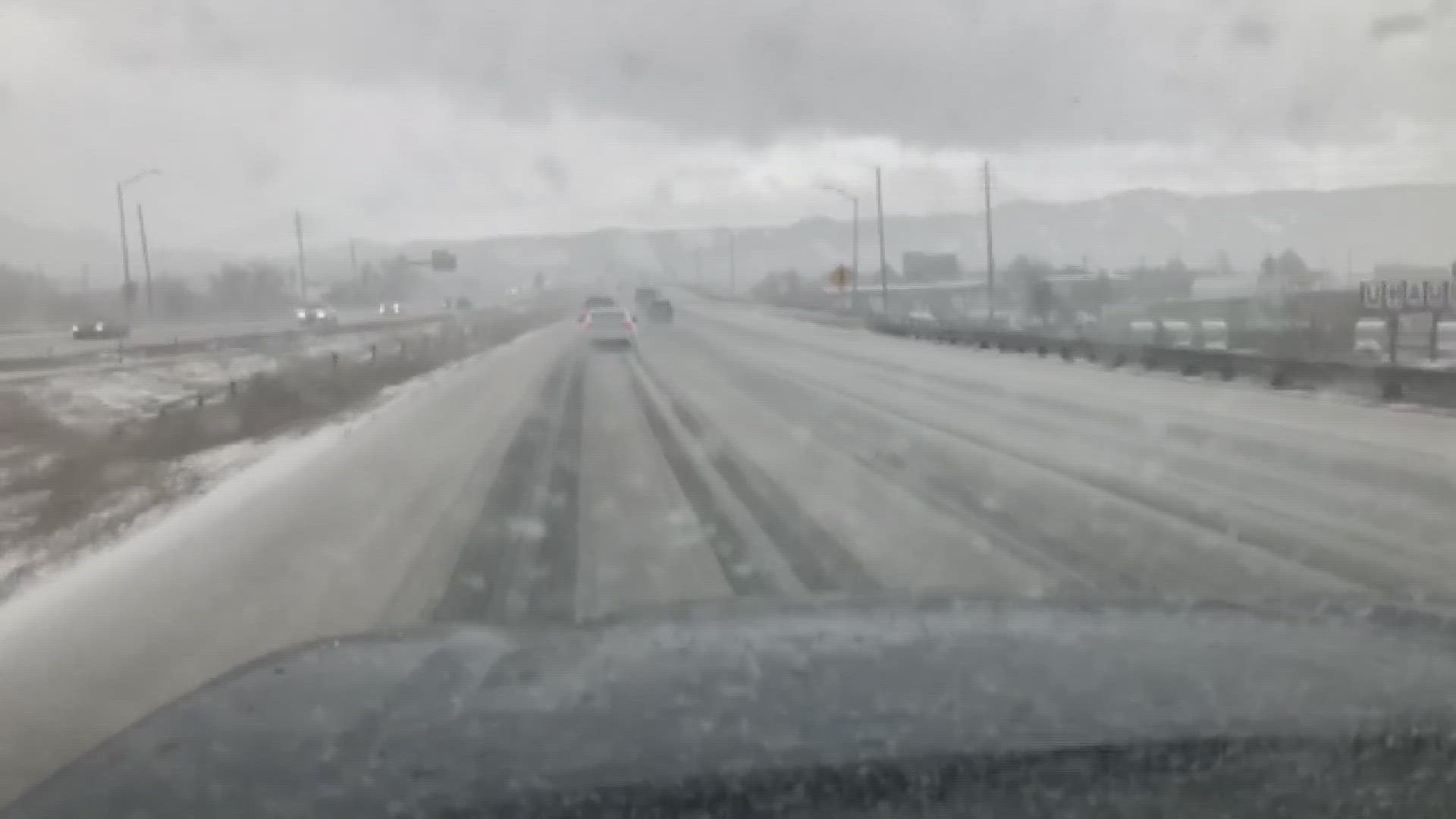We've all heard that phrase about Colorado's famous '300 days of sunshine a year,' right?
While the actual fact behind that statement is questionable, there's no doubt Colorado's sunshine is a thing of beauty.
A really, really bright thing of beauty.
So bright, the sun glare actually closed a major Interstate on Monday morning.
The Colorado Department of Transportation closed Interstate 70 at milemarker 244, Floyd Hill, for 'extreme sun glare' around 7:30 a.m. Monday.
A crash near Floyd Hill Monday morning caused delays and a detour of traffic onto the US 40 Frontage Road.
CDOT says that crash was caused by the 'extreme' sun glare, and elected to close the interstate until the glare became more manageable.
It opened again around 8:30 a.m.
"Yeah you can't see anything, you can't see the cars in front of you," said Mike Colchiski, who lives in Clear Creek County.
As a volunteer firefighter for the Clear Creek Fire Authority, Colchiski responded to a similar incident this past January.
"So we got called out, I was with Clear Creek Fire. A guy, he was in a small pick up truck, he was coming up actually just over the hill and didn't see a semi and plowed right into the back of a semi," he said. "We had to cut him out."
On Monday, the glare was so extreme, CDOT sent a press release advising drivers of the dangers of the sun, especially heading east on I-70 near Floyd Hill this time of year, between 7:00 and 8:30 a.m.
According to the release:
"Beginning in early November, and continuing through early February, the sun’s angle, in combination with the hill and the highway’s configuration, can create a blinding sun glare for drivers as they head eastbound up Floyd Hill (mile 244 to 247 – east of Idaho Springs). The glare occurs from approximately 7 a.m. until 8:30 a.m. However, it is especially severe between 7:30 a.m. and 8 a.m."
CDOT will put up electronic warnings on the signs along I-70 towards Idaho Springs, but they also offer these recommendations:
• Make sure your windshield is clean – inside and out
• Wear a good pair of sunglasses to provide shading
• Expect traffic slowdowns and adjust your speed to avoid sudden reactions
• Let off the accelerator and slow down gradually instead of slamming on the brakes if suddenly blinded by the sun
• Avoid eastbound travel on Floyd Hill, if possible, between 7 a.m. and 8:30 a.m.
As a reminder, too, if you are involved in a minor accident, Colorado State Law requires you to move your vehicle immediately out of traffic and to a safe location off the roadway.
“Many people are apprehensive about moving their vehicle after an accident, worried they’re jeopardizing their insurance coverage,” says Carole Walker, executive director of the Rocky Mountain Insurance Information Association. “However, when it comes to safety, the industry fully supports taking actions that reduces potential hazards to drivers, first and foremost.”
CDOT says they have an engineer drive the I-70 stretch between Evergreen and Idaho Springs each morning to gauge the glare, but this bright problem could last sporadically until February.


